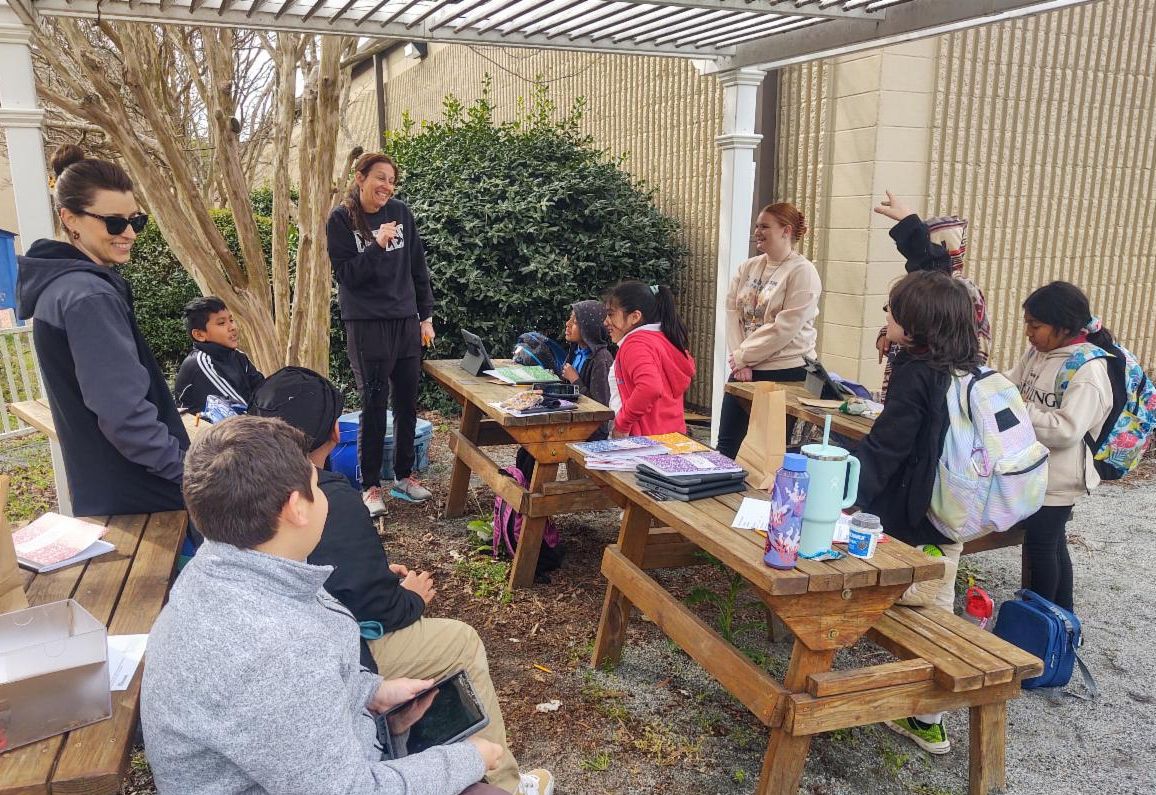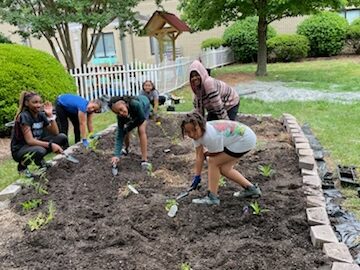Garden Clubs: G.W. Carver Elementary

This month’s featured garden club is a perfect example of how a garden club can be the key
factor in sustaining a school garden effort. It is also a unique example of garden leadership where the school nurse has chosen to be the garden lead rather than a classroom or exploratory teacher. Abraya Johnson, MPH, BSN, RN, NCSN, views her involvement with the garden at G.W. Carver Elementary as an effort to be proactive with students regarding healthy choices, especially as they relate to fresh, local produce and nutrition.
- School name: G.W. Carver Elementary
- Club advisor: Abraya Johnson
Q. When does the garden club meet?
A. We started later in the fall last year, but hope to get started earlier this year. The students helped harvest the sweet potatoes in the fall, which was a really fun way to start. We are going to try to plant some cucumbers and squash for fall harvest. We take a break during the coldest months.

Q. Who gets to be in the garden club?
A. This year, we’ve narrowed it down to fourth and fifth graders. When we included third graders, they were often squirrely and didn’t want to stick with the work or the activities. The spread in ages was difficult and it helped to pare down the group. In the past, I worked with all grades, but in small groups of 4 to 6 kids.
Q. How do members join the garden club and how many students do you serve?
A. We’ve had several different structures during the three years we’ve had the garden club. The first club included 75 students who were in the after school program that was operated by the Boys and Girls Club. This year the teachers invited students to participate. We started with 15, but it has been pared down to 10, which is a really nice number. Next year, we plan to let the students apply. Depending on how much interest there is, we may have two separate groups.
Q. How does the club use the garden?
A. We do a variety of activities. Every week there are some maintenance activities, such as
planting, weeding and watering. I also plan learning activities that include seed collection,
pollinators, bug discovery, composting (worm and general), tastings, social emotional components, etc.
Q. What does the club do with the harvest?
A. Several things:
- Tastings: the sweet potatoes are so much fun to taste. The teachers who sign up to help with the harvest also get to have tastings. I share a video I made at home preparing the sweet potatoes and then the students get to taste it at school. I try to align other tastings with the learning standards. For example: First Peas to the Table can connect to weather; Kindergarten farm visits dovetail with strawberries or pumpkins; and fourth grade nutrition suits any tasting experience from the garden.
- Weekend food bags: I send a request form home in the food bags and families who submit a request will get produce when in season.
- Popup Farmers Markets: We set up the harvest for sale in the carpool line or at family events.
- Community Food Pantries: We do a lesson on food insecurity and donate the harvest.
Q. What does the garden team look like and do you use any volunteer groups?
A. We have three other staff who volunteer to help with the garden club; our counselor, ESL teacher and a second grade teacher. It has been a great mix and really helps with management. We had a parent volunteer in the fall and she was fantastic. Over the summer, we usually rely on coordinated garden workdays when parents come to help and some church groups volunteer.
Q. Do you utilize fundraisers or sponsorships to support the garden?
A. So far, we have secured grants and used the money that we earned from the carpool line farmers markets.
Q. What are the benefits of the garden club?
A. I love seeing the kids get so involved in the growing of their food. Students are so much more likely to try something they grew. I have seen this so often. Kids will say kale is “nasty” and then ask me for the recipe for the kale salad or smoothie they tried. I also can see how engaged the students are. During the school day students who are anxious or having behavior issues will ask to go to the garden to calm themselves.
Q. Share any success stories or memorable experiences related to the garden club.
A. The best thing for me is seeing kids eating what they grow and really engaging with nature. A couple weeks ago the club asked what was growing and asked what they could taste. Their favorite was the Swiss chard. They ate it by the handful. We cooked it the next week and honestly, they preferred it raw. This past week, Doug came over and the kids did a bug detective hunt. We borrowed some iPads and they went around the school looking for bugs. When we were finished we discussed what they ate and how they impacted the garden. It was so much fun.
- Categories: